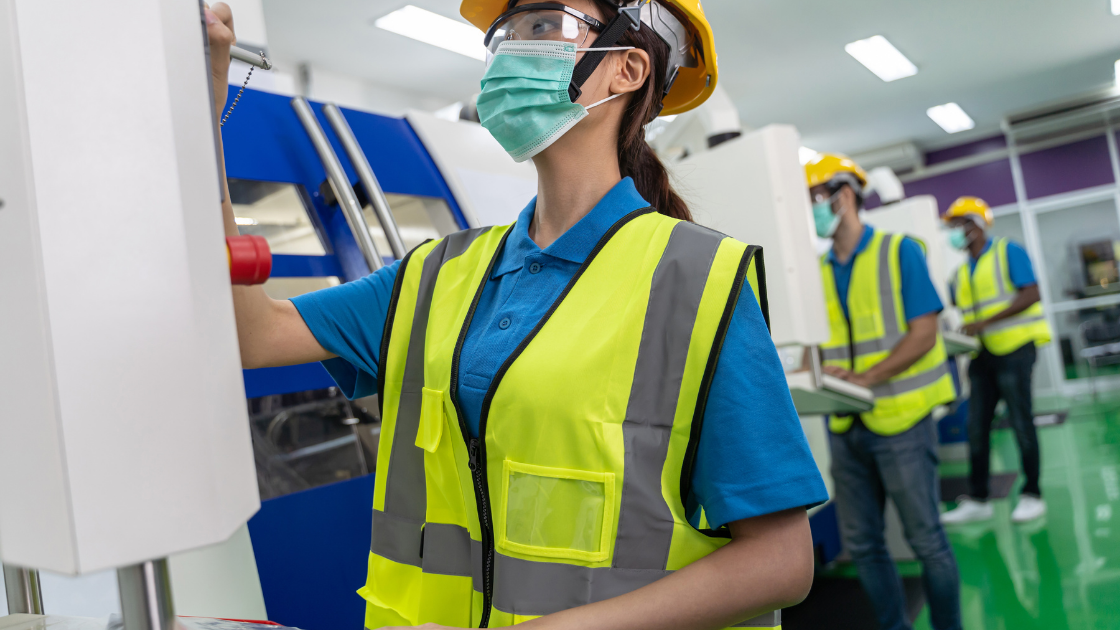Hint: It’s not vaccination status.
As the country deals with Omicron, employers may be wondering what the future of the workplace will look like. While it’s clear that Covid-19 isn’t going away anytime soon, it’s also clear that workplaces will need to grapple with some decisions of what policies and procedures they will keep in place even after the initial crisis of the pandemic is over.
For instance, one of the questions that employers will have to answer is how long workplace mask requirements should be kept in effect. Emerging data has suggested that the practice of wearing cloth masks can be widely variable and may not be as effective against more contagious variants of Covid-19. And while requirements may ultimately depend on broader objectives in the workplace, it may be helpful to institute a scorecard for employers to follow when deciding upon mask requirements.
To mask or not to mask: A scorecard
- What is the level of community spread?
- What is the density of employees in the workplace and the physical parameters?
- Are people likely to come into work sick?
- What risk identification processes are in place and are they objective or subjective?
To help employers decide when a mask requirement is needed—and when it may be suspended—the following scorecard of questions may be helpful. Each one can be scored on a 1-10 scale and then added together. If the final score is above a certain threshold (as determined by each individual company), then the strict mask policy stays in place. If it is below a certain threshold, then it can potentially be scaled back in scenarios like when an employee is not within close quarters of others.
What is the level of community spread currently present?
The first step is to look outside the workplace. Although it may only take one contagious individual to start an outbreak, it can be a smart strategy to take into account the actual level of contagion risk. In areas of low community spread, the risk will be lower. If the area the workplace is in is currently experiencing an outbreak or has high levels of community spread, then the risk is greater.
Scoring Scale:
1 – Very low levels of Covid-19 and Flu community spread
10 – High levels of Covid-19 and Flu community spread
What is the density of employees in the workplace and what are the physical parameters?
The next thing to take into account is the number of employees within the workplace and the physical parameters. A small, poorly-ventilated workplace with employees in close proximity to each other will be vastly different from a well-ventilated, open-air area where employees all work in individual enclosed spaces with minimal ventilation. Taking into account the individual facility’s needs can be the first place to start to assess mask necessity.
Scoring Scale:
1 – Low density of workers within a larger, well-ventilated space
10 – High density of workers within a smaller, poorly-ventilated space
Are people likely to come to work sick?
It’s also important to consider what sick policies are in place for employees who may be sick. Employees who may have an incentive to avoid revealing symptoms that could indicate a contagious infection or who feel they are unable to miss work could pose a risk of introducing a pathogen to the workplace. Things like the ability to work from home while sick can help this. Again, catching an infection before it is brought into the workplace is the most effective infection control strategy and that starts with employees who are motivated and able to stay home when they are sick.
Additionally, in workplaces that may have frequent visitors with motivation not to reveal symptoms (i.e., a hospital where loved ones want to come to visit), it’s important to consider the benefits that universal masking may have in recognizing that risk mitigation may not be effective.
Scoring Scale:
1 – The ability to work from home and adequate paid sick days
10 – No work from home policy and no paid sick days
What processes are in place for identifying workplace risk, and are they objective or subjective?
While determining the overall risk from the current community spread of illness, another important step is identifying what policy and procedures are in place for identifying individual risks that will be posed for the workplace. For instance, as pointed out, it only takes one individual to cause an outbreak.
Therefore, what processes are in place to identify an employee or visitor who may be displaying symptoms or is at high risk for exposing others? In an ideal workplace situation, the risk would be identified before the individual enters the workplace, eliminating the risk altogether, along with the need for universal masking.
Resources such as health screening questionnaires, touchless temperature screenings, and employee education can all build a robust risk identification and mitigation strategy that can help prevent introducing infection into the workplace in the first place.
Along those same lines, employers should assess if the risk mitigation strategies enacted are objective vs. subjective. For instance, if a health questionnaire is used for employees and visitors, is it simply self-reported symptoms or are measurable and objective assessments being utilized?
A company-sponsored measurable and objective piece of data, such as temperature screening that may identify infection before other symptoms appear, is superior to sole reliance on self-reported symptoms by employees and/or visitors. Additionally, data that can be tracked daily will help identify trends and increase compliance with employee health reporting. Employees that are used to daily reporting, for example, may produce more accurate results than inconsistent reporting or suddenly-introduced measures.
Scoring Scale:
1 – Company sponsored, objective daily symptom screening
10 – No policy around self-screening or loosely enforced self-screening policy
What about vaccination status?
One aspect missing from the scorecard is vaccination status. Every workplace will have to adhere to any vaccine mandates currently in place for their facility, but for assessing mask mandates from an employer standpoint, vaccination status may be considered as a separate issue.
While the CDC notes that fully vaccinated people infected with the Delta variant have the potential for reduced transmissibility or a shorter time period in which they can spread the virus, it is also clearly stated that breakthrough infections do happen and fully vaccinated people can spread the virus to others. And unfortunately, with the Omicron variant, evidence suggests that it is highly transmissible among vaccinated individuals, more so than previous variants.
With this information in mind, it makes sense to exclude vaccination status as a factor in determining whether or not a mask requirement is necessary. Instead, working off the assumption that anyone displaying symptoms or experiencing an elevated temperature – regardless of vaccination status – could be contagious and should be isolated from others, is a safer approach.


